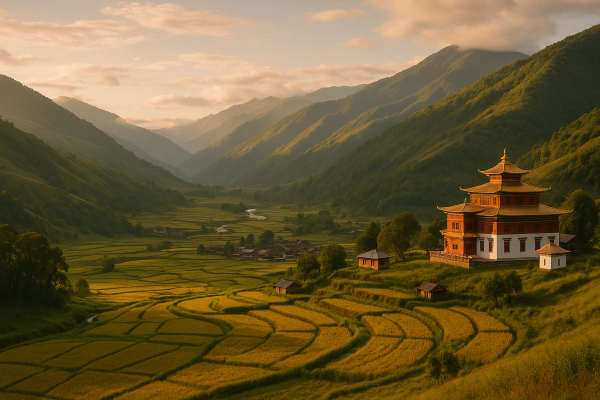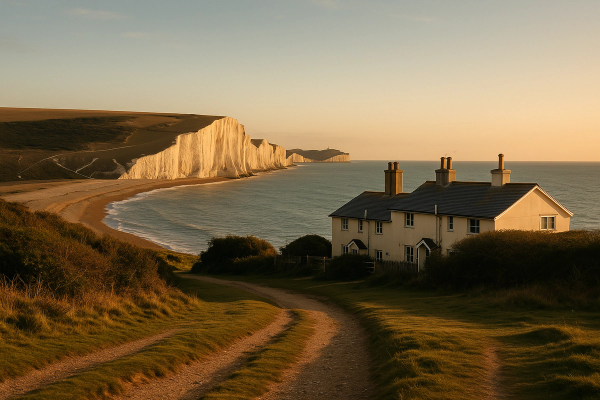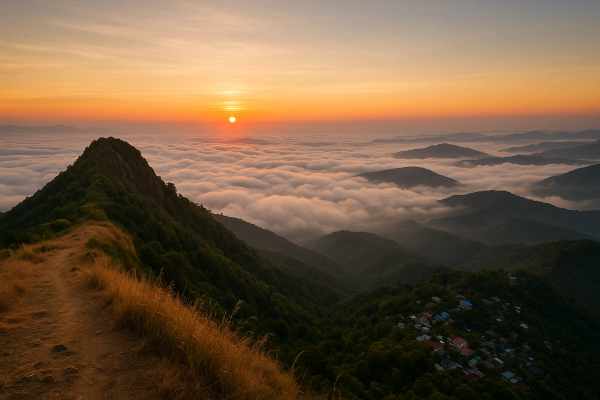I. Introduction#
Definition of Festivals in India: In this section, the concept of festivals in India will be defined, and the meaning of various festivals will be explained.
¶
The Importance of Festivals in Indian Culture: This section will discuss the cultural significance of festivals in India, including their social, religious, and economic impact.
¶
Purpose of the blog post: This section will outline the purpose of the blog post, which is to provide unique and lesser-known facts about some of India's most popular festivals.¶
Diwali, or the Festival of Lights
A. Diwali's Origin and History: This section will explain the history and significance of Diwali, as well as its religious and cultural significance.
B. Interesting and lesser-known facts about Diwali: This section will cover interesting and lesser-known facts about Diwali, such as regional variations in how it is celebrated and the significance of the five-day celebration.¶

Holi: The Color Festival
A. Holi's Origin and History: This section will explain the history and significance of Holi, as well as its religious and cultural significance.
B. Interesting and lesser-known facts about Holi: This section will cover interesting and lesser-known facts about Holi, such as the significance of different colors used during the festival and regional variations in how it is celebrated.¶
Durga Puja: The Goddess Durga Festival
A. Durga Puja Origin and History: This section will explain the history and significance of Durga Puja, as well as its religious and cultural significance.
B. Interesting and lesser-known facts about Durga Puja: This section will cover interesting and lesser-known facts about Durga Puja, such as the significance of the nine-day celebration and regional variations in how it is celebrated.¶

Ganesh Chaturthi: Lord Ganesha's Festival
A. Origin and history of Ganesh Chaturthi: This section will explain the history and significance of Ganesh Chaturthi, including its religious and cultural significance.
B. Interesting and lesser-known facts about Ganesh Chaturthi: This section will cover interesting and lesser-known facts about Ganesh Chaturthi, such as the significance of the 10-day celebration and regional variations in how it is celebrated.¶

II. Unusual Festivals and Celebrations in India#
India is a land of many cultures, religions, and traditions. Aside from popular festivals like Diwali, Holi, and Eid, there are many unique and unusual festivals celebrated throughout the country. In this section, we'll look at some of India's most unusual festivals and celebrations.¶
A. Nag Panchami Festival: Snake Worship
Nag Panchami is a unique festival celebrated throughout India to honor the snake god, also known as Nag. Snakes are thought to have divine powers, and by worshipping them, people can seek their blessings and protection from snake bites. The festival is usually held in July or August and is marked by the offering of milk, sweets, and flowers to the snake god.¶
B. The Hornbill Festival: a Naga tribal celebration
The Hornbill Festival is a popular festival in Nagaland, a state in northeastern India. It is a celebration of Nagaland's rich cultural heritage and is named after the sacred hornbill bird. The festival features traditional dance performances, music, food, and crafts.¶
C. The Attukal Pongala: a cooking festival for women only.
Attukal Pongala is a unique festival celebrated in Kerala that is thought to be the world's largest gathering of women for a religious festival. It is a women-only festival in which thousands of women gather to cook rice pudding for the goddess Attukalamma. The festival is usually held in February or March and has been listed in the Guinness Book of World Records as the largest gathering of women.¶
D. The Pulikali Festival: Kerala's tiger dance
The Pulikali Festival, also known as the Tiger Dance Festival, is a one-of-a-kind celebration of Kerala. It is a traditional folk art form in which performers paint their bodies to resemble tigers and dance on the streets to the beats of drums and other musical instruments. The festival is usually held during the Onam festival in August or September.¶
E. The Bani Festival: a tribal celebration of menstruation
The Bani Festival is a one-of-a-kind menstruation celebration held by the Muria tribe in the state of Chhattisgarh. It is a celebration of womanhood and fertility, with traditional dance performances, music, and rituals. The festival is usually held in June or July and is considered an important cultural tradition of the Muria tribe.¶
These unusual festivals and celebrations attest to India's rich cultural heritage and highlight the country's diversity and uniqueness.¶

III. Lesser-Known Festivals in India#
India is a land of diverse cultures and traditions, and as such, there are numerous lesser-known festivals that are celebrated across the country. Here are five such festivals:¶
A. Kila Raipur Sports Festival: The Kila Raipur Sports Festival, also known as the Rural Olympics, is held annually in the village of Kila Raipur in Punjab. The festival features a wide range of traditional sports and activities, such as bullock cart races, tractor races, and kabaddi matches. The festival attracts participants from all over India and even abroad, and is a celebration of rural Punjab and its culture.¶
B. Mahindra Kabira Festival: The Mahindra Kabira Festival is a folk music festival held in the city of Varanasi in Uttar Pradesh. The festival is named after the famous 15th-century mystic poet Kabir, and celebrates his teachings through a series of concerts and performances by folk musicians from across India. The festival also includes workshops and discussions on Kabir's philosophy and its relevance today.¶
C. Nongkrem Dance Festival: The Nongkrem Dance Festival is an annual harvest festival celebrated by the Khasi tribe in Meghalaya. The festival is held at the Smit village and is a celebration of thanksgiving to the gods for a bountiful harvest. The highlight of the festival is the Nongkrem dance, which is performed by young girls and is a symbol of purity and fertility. The festival also features traditional sports and activities, such as archery and wrestling.¶
D. Galdan Namchot: The Galdan Namchot is a winter festival celebrated in the Ladakh region of Jammu and Kashmir. The festival marks the birthday of the famous Tibetan scholar-saint, Tsongkhapa, and is a celebration of the winter solstice. The festival is marked by the lighting of lamps and bonfires, and the offering of prayers to the gods for a good harvest in the coming year.¶
E. Kambala Festival: The Kambala Festival is an annual buffalo race held in the state of Karnataka. The festival is a celebration of the local farming community and their relationship with the buffalo, which is considered a sacred animal in the region. The festival involves a series of races between buffaloes, which are ridden by farmers who compete for prizes and recognition. The festival is a colorful and exciting spectacle and is a unique example of the close relationship between humans and animals in rural India.¶
These festivals are just a few examples of the rich and diverse cultural heritage of India and serve as a reminder of the importance of preserving and celebrating our traditions and customs.¶

#
IV. Significance of these Festivals#
A. Cultural and social importance¶
- Festivals in India are deeply rooted in the country's rich cultural and religious traditions and serve as a way to connect people to their heritage and roots.
- They also provide an opportunity for communities to come together and celebrate their shared values and beliefs.
- Festivals promote social cohesion and strengthen bonds between people, fostering a sense of belonging and identity.
B. Contribution to the economy¶
- Festivals have a significant impact on the economy of India, generating income through tourism, transportation, hospitality, and local businesses.
- They also provide employment opportunities for artisans, craftsmen, performers, and vendors who sell goods and services during the festivities.
- The economic benefits of festivals have a ripple effect on the local economy, contributing to the growth and development of the region.
C. Boost in tourism¶
- India's festivals attract tourists from all over the world, who come to experience the vibrant culture and traditions of the country.
- The influx of tourists during the festival season generates revenue for the tourism industry and the local economy.
- Festivals like the Kumbh Mela, the Pushkar Camel Fair, and the Holi Festival have become major tourist attractions, drawing visitors from far and wide.
In conclusion, festivals in India are not only a celebration of culture and tradition but also an important economic and social event that plays a significant role in the country's growth and development.¶
India is a place of festivals, and its different and distinct festivities are absolutely unforgettable. Every holiday in India has a tale to tell, from odd and lesser-known celebrations to those with cultural and societal importance. By these holidays, one may obtain a better grasp of Indian culture and traditions. They also contribute considerably to the economy and increase tourism. In an increasingly globalised society, it is critical to embrace and respect diverse cultures. Thus, let us all enjoy the beauty of India's festivals and discover its vast diversity.¶














